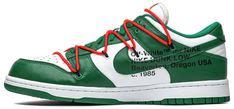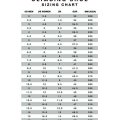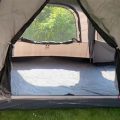How to Spot Fake Kong Gear: A Comprehensive Guide
In the world of outdoor adventure, Kong is a renowned name synonymous with high-quality climbing gear. But with the rise of counterfeit products, identifying genuine Kong gear is crucial for ensuring safety and reliability. This guide aims to equip you with the knowledge and tools to distinguish between authentic Kong gear and its imitations.
Identifying fake Kong gear can be a challenging task, as counterfeiters often employ sophisticated techniques to mimic the brand’s aesthetics. However, by paying close attention to specific details and utilizing resources provided by Kong, you can significantly enhance your chances of spotting a fake.
This comprehensive guide delves into the intricacies of identifying fake Kong gear, covering a wide range of aspects. We will examine key features, branding elements, materials, and resources available to help you make informed decisions.
By understanding the telltale signs of counterfeit products and staying vigilant, you can protect yourself from purchasing substandard gear that could compromise your safety during your outdoor activities.
Let’s embark on this journey of uncovering the secrets of authentic Kong gear and safeguarding your adventures.
How can I tell if my Kong gear is real?
Distinguishing between authentic Kong gear and its counterfeit counterparts requires a keen eye for detail and a thorough understanding of the brand’s signature features. Here’s a breakdown of the key elements to scrutinize:
- Branding and Labeling:
- Kong Logo: The Kong logo is distinctive and easily recognizable. Look for clear, sharp lines and a consistent font style.
- Serial Number: Genuine Kong gear typically has a unique serial number engraved or printed on it.
- Country of Origin: Kong gear is primarily manufactured in Italy. Check the label for accurate origin information.
- CE Marking: Ensure the presence of the CE marking, indicating that the gear meets European safety standards.
- Material Quality:
- Metal Components: Examine the quality of metal components, such as carabiners and belay devices. Look for smooth surfaces, precise machining, and durable finishes.
- Rope Material: If dealing with ropes, inspect the texture and feel. Authentic Kong ropes have a consistent weave and are made with high-quality materials.
- Stitching and Seams: Look for neat, even stitching on webbing and straps. Uneven or loose stitching could indicate a fake.
- Packaging and Documentation:
- Packaging: Genuine Kong gear is often packaged in branded boxes or bags with a specific design and color scheme.
- Instructions and Warranty: Look for detailed instructions and a warranty card. Counterfeit products may lack these documents or have poorly printed versions.
Remember that counterfeiters are constantly evolving their tactics. It’s crucial to stay informed and update your knowledge about the latest counterfeit trends. If you have any doubts about the authenticity of a product, it’s always best to err on the side of caution and avoid purchasing it.
What are some common signs of fake Kong gear?
While counterfeiters strive to create convincing imitations, there are telltale signs that can reveal a fake Kong product. By understanding these common indicators, you can enhance your ability to spot counterfeits and safeguard your investment in quality gear.
- Misspelled Words or Grammar Errors: Pay attention to the spelling and grammar on the packaging, labels, and any accompanying documents. Counterfeiters often make mistakes in these areas, which can be a red flag.
- Poor Print Quality: Examine the print quality of the branding, labels, and packaging. Genuine Kong gear typically features crisp, clear printing, while fakes may have blurry or pixelated designs.
- Inconsistent Branding: Be vigilant for any inconsistencies in the Kong logo, color scheme, or other branding elements. Counterfeiters may deviate from the original branding, making it easier to detect a fake.
- Suspiciously Low Prices: If you find a Kong product offered at a significantly lower price than usual, it’s wise to be skeptical. Counterfeiters often sell their products at discounted rates to attract unsuspecting buyers.
- Missing or Incomplete Documentation: Pay close attention to any missing or incomplete instructions, warranty cards, or other documentation that should accompany a genuine Kong product. This can be a strong indicator of a counterfeit.
While these indicators provide valuable clues, it’s essential to remember that counterfeiters are constantly refining their techniques. If you have any doubts about the authenticity of a Kong product, it’s always advisable to seek confirmation from a trusted source.
Where can I buy authentic Kong gear?
To ensure you’re investing in genuine Kong gear, it’s crucial to source it from reputable retailers and authorized distributors. Here are some reliable avenues to consider:
- Kong’s Official Website: The best place to purchase authentic Kong gear is directly from their official website. This guarantees the legitimacy of the product and allows you to browse their complete catalog.
- Authorized Retailers: Look for retailers that are authorized distributors of Kong gear. These stores have established relationships with the brand and are committed to selling genuine products.
- Specialized Climbing Shops: Climbing shops often carry a wide range of high-quality climbing gear, including authentic Kong products. Seek out stores known for their expertise and reputation in the climbing community.
- Online Marketplaces: Be cautious when purchasing Kong gear from online marketplaces like eBay or Amazon. Verify the seller’s reputation and ensure they are an authorized distributor. Check for positive reviews and feedback from other buyers.
Always exercise caution when purchasing Kong gear from unfamiliar sources. Avoid dealing with sellers who offer suspiciously low prices or lack proper documentation.
What should I do if I suspect I have fake Kong gear?
If you have any doubts about the authenticity of your Kong gear, it’s essential to take appropriate steps to investigate and address the situation.
- Contact Kong: Reach out to Kong’s customer service directly. They can provide information about identifying genuine products and may be able to assist you in verifying the authenticity of your gear.
- Consult with a Climbing Expert: Seek advice from a knowledgeable climbing instructor or experienced climber. They can often spot telltale signs of counterfeit gear and offer guidance on identifying genuine products.
- Report the Seller: If you purchased the gear from an online marketplace or retailer, report the seller to the platform or store. This helps prevent other buyers from falling victim to counterfeit products.
Remember that using fake climbing gear can pose serious safety risks. It’s crucial to prioritize your safety by ensuring you have authentic and reliable equipment.
How can I avoid buying fake Kong gear in the future?
Protecting yourself from counterfeit Kong gear requires a combination of vigilance and informed decision-making.
- Stay Informed: Keep yourself updated on the latest counterfeit trends and techniques. Regularly visit Kong’s official website and other reputable sources for information about identifying fake products.
- Trust Your Instincts: If you encounter a product that seems suspiciously low priced or lacks proper documentation, don’t hesitate to walk away. Trust your gut feeling and avoid taking unnecessary risks.
- Compare Prices and Products: Before purchasing, compare prices and product details across different retailers. Be wary of deals that appear too good to be true.
- Seek Feedback and Reviews: Read reviews and feedback from other buyers before purchasing Kong gear from online marketplaces or unfamiliar retailers. This can provide valuable insights into the authenticity of the product and the seller’s reputation.
By following these tips and exercising due diligence, you can greatly reduce your chances of purchasing fake Kong gear and ensure you’re investing in quality equipment that supports your outdoor adventures.
What are the risks of using fake Kong gear?
Using counterfeit Kong gear poses significant risks to your safety and the success of your outdoor activities. It’s crucial to understand these dangers to appreciate the importance of investing in genuine gear.
- Safety Hazards: Fake gear is often made with substandard materials and construction methods, which can fail under pressure, leading to serious injuries or even death. Counterfeit carabiners, belay devices, and ropes may not meet safety standards and could unexpectedly break or malfunction.
- Performance Issues: Counterfeit gear may not perform as intended, compromising your ability to climb, rappel, or engage in other activities safely and effectively. Fakes may have weak or inconsistent strength, leading to unexpected slippage, failure, or reduced durability.
- Legal Implications: Purchasing or using counterfeit goods can have legal consequences. In some countries, it’s illegal to possess or use counterfeit products, and penalties can include fines or even imprisonment.
When it comes to climbing and other outdoor activities, safety should always be your top priority. Using authentic Kong gear ensures you have equipment that meets the highest standards and minimizes the risks associated with counterfeit products.
What are the differences between real and fake Kong gear?
Distinguishing between authentic and counterfeit Kong gear requires a keen eye for detail and an understanding of the brand’s signature features. Here’s a table outlining key differences to help you spot fakes:
| Feature | Real Kong Gear | Fake Kong Gear |
|---|---|---|
| Logo | Clear, sharp lines; consistent font style | Blurry, inconsistent, or misspelled logo |
| Serial Number | Unique, engraved or printed | Missing, duplicated, or easily erased |
| Country of Origin | Primarily Italy | Misleading or inaccurate country information |
| CE Marking | Present, clearly visible | Absent or poorly printed |
| Materials | High-quality, durable metals and ropes | Cheap materials, uneven texture, and flimsy construction |
| Stitching and Seams | Neat, even, and securely sewn | Loose, uneven, or poorly stitched |
| Packaging | Branded boxes or bags with a specific design | Generic packaging, inconsistent branding |
| Instructions and Warranty | Detailed instructions and a valid warranty card | Missing or incomplete documentation |
| Price | Consistent with market value for genuine products | Significantly lower than usual prices |
How to Identify Fake Kong Gear – FAQ
What should I do if I bought fake Kong gear?
If you’ve purchased fake Kong gear, you should contact the retailer or online marketplace where you bought it and report the issue. You may be able to return the product and get a refund. You should also contact Kong directly to report the seller and inform them of the counterfeit product.
Is it legal to buy fake Kong gear?
No, it is illegal to buy counterfeit goods, including fake Kong gear. Purchasing counterfeit products supports illegal activity and can be subject to fines or other legal consequences. It’s important to purchase genuine products from authorized retailers to ensure you are not breaking the law.
Can I get a refund if I bought fake Kong gear?
It depends on the retailer. Some retailers may offer a refund if you can prove that you bought a counterfeit product. However, others may refuse a refund. It’s always best to contact the retailer and explain the situation.
How can I tell if a Kong product is real online?
You can tell if a Kong product is real online by checking the seller’s reputation, reading reviews, and looking for the Kong logo on the product’s packaging. You should also check for the presence of a serial number and a valid warranty card. If you’re still unsure, you can contact Kong directly for confirmation.
What are the best places to buy Kong gear online?
The best places to buy Kong gear online are the Kong official website, authorized retailers, and specialized climbing shops. Avoid purchasing from unfamiliar retailers or sellers offering suspiciously low prices.
How do I spot a fake Kong carabiner?
To spot a fake Kong carabiner, look for a clear, sharp Kong logo, a unique serial number, and a CE marking. Check the material quality for smooth surfaces, precise machining, and durable finishes. Inspect the gate opening for smooth operation and ensure the carabiner is properly marked with its weight rating.
What are the safety risks of using fake Kong climbing gear?
Using fake Kong climbing gear poses significant safety risks, as it’s often made with substandard materials and construction methods. Counterfeit carabiners, belay devices, and ropes may not meet safety standards and could unexpectedly break or malfunction, leading to serious injuries or even death.



